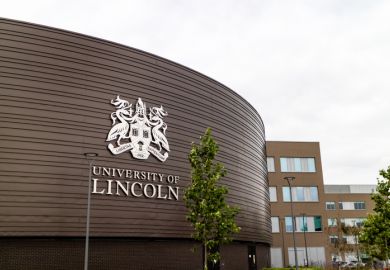Source: Getty
Ballooning numbers: applicants for university places this year are predicted to hit an ‘all-time’ high
The academy is on course for record recruitment this year despite falling numbers of 18-year-olds in the population, delivering a “bloody nose to the anti-university lobby” and a political boost to the coalition.
However, observers have warned that universities may invite scrutiny over undergraduate quality after institutions combated the demographic decline by admitting a greater proportion of applicants.
Some 433,220 applicants had places by Tuesday at UK institutions – up from 404,000 by this time in 2012 and marginally more than the 431,250 placed at the same point in 2011.
David Willetts, the universities and science minister, said he was “very encouraged” by the interim figures published by Ucas. “It appears that last year was an artificial dip and recruitment is now back on track,” he told Times Higher Education. “Young people understand how our system works and are not put off…while universities have understood the freedoms we have given them to make offers and have used them, so that more students than ever before will attend their first choice.”
Universities have increased their engagement with students throughout the year, Mr Willetts argued, while “clearing was working” after last year’s slump in activity.
With universities allowed to recruit a maximum of 3 per cent above their student number controls this year, compared with 2012 the volume of students placed via firm offers rose by 6 per cent to 359,350. The total placed through clearing increased by 8 per cent to 24,660 as of 20 August.
With recruitment currently above 2011 levels, when nearly 470,000 UK and European Union students were ultimately enrolled by Ucas, the sector was on course for an “all-time record”, said David Green, the University of Worcester’s vice-chancellor.
“With fewer 18-year-olds around, it means a higher rate of 18-year-olds going to university,” he added. “That is because young people are thinking about their future and recognising their best option is to go and get some qualifications.”
This was a “bloody nose for the anti-university lobby”, which argues that many young people would be better served entering the workplace, Professor Green said. “All this lobby can really offer is going into a firm, which might somewhere down the track help you go to university.”
He added: “This year’s figures are a resounding success for universities. They also represent a big investment in Britain’s future: an extra 30,000 students going to university equates to about £250 million in fees that will help pay for new laboratories, refurbish accommodation and hire more staff.”
Better prepared
Dominic Shellard, vice-chancellor of De Montfort University, said that the sector had got its recruitment act together after the uncertainties of 2012, a transitional year.
De Montfort “installed an extra 250 telephone lines for the first day of clearing and drafted in an extra 300 volunteers to help with the 10,000 calls we got in the first four hours,” he said.
However, Bahram Bekhradnia, chief executive of the Higher Education Policy Institute, said that any increase in student numbers might be short-lived.
“Student loans are heavily subsidised – every student costs the government a lot of money,” he said. “The Treasury will claw it back by lowering the number of students in future, increasing graduate contributions or cutting other parts of the budget.”
Andy Westwood, chief executive of GuildHE, said that the sector looked healthy again.
“Most significant…is that the high tuition fee and loan system now looks bedded in,” he said, adding that “politically, the coalition can say that its reforms have worked”.
“This is really significant, and [the coalition] would have given a lot for these headlines this side of the general election,” Mr Westwood said.
With applications lower than 2011 levels but acceptances higher, the quality of students heading into higher education might come under Westminster scrutiny, he warned.
“Quality might well be a battleground [as] there will be some institutions dropping entry criteria right across the board,” he said.
Register to continue
Why register?
- Registration is free and only takes a moment
- Once registered, you can read 3 articles a month
- Sign up for our newsletter
Subscribe
Or subscribe for unlimited access to:
- Unlimited access to news, views, insights & reviews
- Digital editions
- Digital access to THE’s university and college rankings analysis
Already registered or a current subscriber? Login




